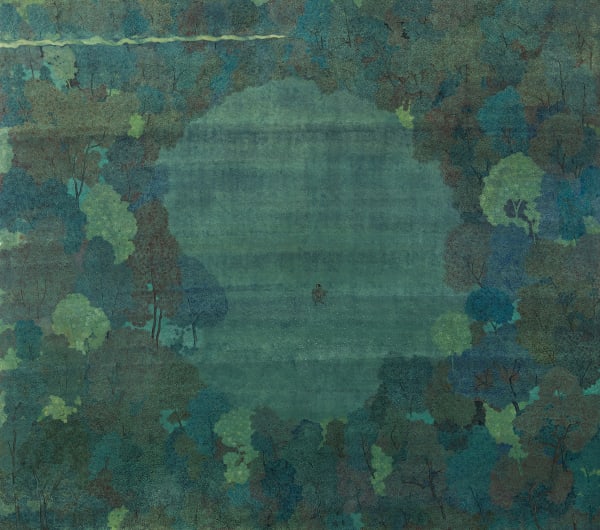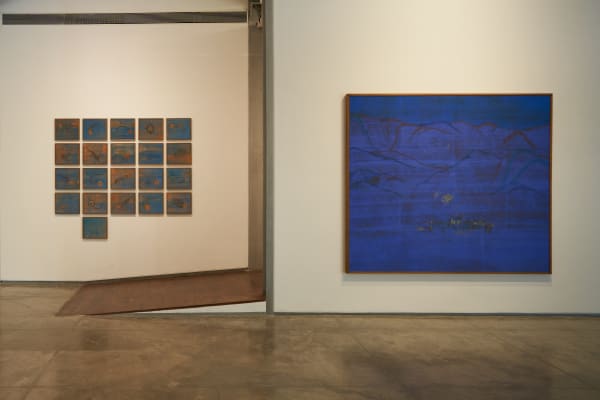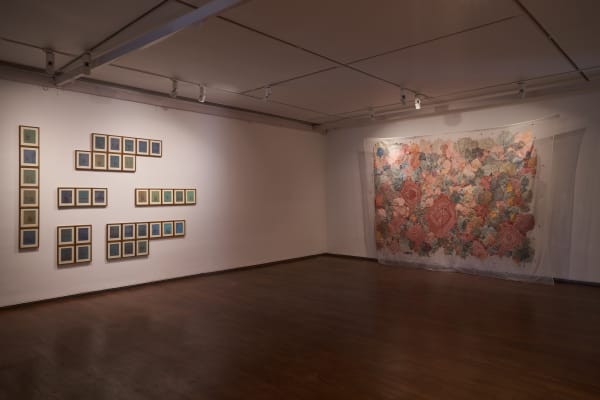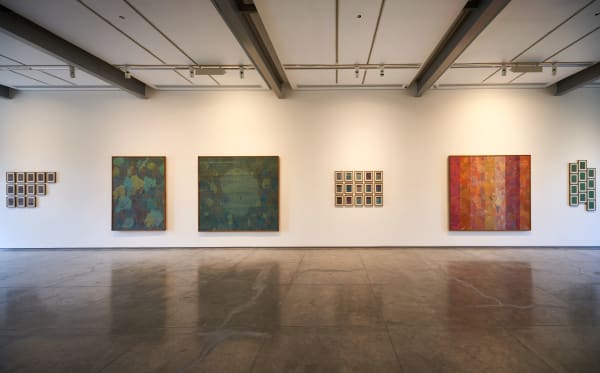Caput Mortuum: Varunika Saraf
How do we stop the exponential rise of violence? Is it still possible to dream of an egalitarian society? Can we find love and hope amidst hate? Will we be able to heal the festering sores that riddle our world? How long will we continue to remain silent? To speak about a present besieged by brutal acts of violence, this body of work takes its name from the synthetic Iron Oxide pigment Caput Mortuum (Dead Head) that resembles dried blood. In alchemy, Caput Mortuum is classified as 'worthless remains'– the residue left on the bottom of the heating flask once the nobler elements sublimate. Perhaps, like our society, an outcome of a flawed experiment. Using this metaphor of decay and decline, I seek to highlight much of what we leave unspoken in our complicity and attempt to dispel the collective amnesia that sustains the cruel illusion called progress.
After grinding it into fine watercolour, I deposit Caput Mortuum in thin washes onto the burnished plane of the Wasli. It appears to haemorrhage through the overlying stratum of intense colours, staining the surface of the painting in the same way as historical injustices seep through the cracks of time to mould our present, just as wounds inflicted by hate scar our society. In this process, Caput Mortuum also becomes a marker of a past rife with injustice and comes to signify the complexity of our current predicament. The blots of bleeding colour disrupt the picture plane, positing the explicit imagery portrayed as fallouts of all that lies underneath, i.e., the effects of deep malaise and structural violence, and, at the same instance, become portents of futures that are yet to unfold.
The events inscribed onto the surface of each painting document the extraordinary struggles that people are facing and bear witness to life without power and political agency. I draw upon medieval imagery of interpretations and revelations to develop a language that allows us to process not just portents and spectacles but also anxiety caused by political and social upheavals. Drawing inspiration from Griselda Pollock’s seminal work that highlights the importance of remembering the past that “agitates the present” to warn us of the enduring threat of systemic dehumanisation, I engage with the ever-growing phenomenon of violence that is bringing us to the brink of annihilation. The language that builds on stains, scars and disruptions is further supplemented with ‘remediations’ of the iconography of miraculous and apocalyptic visions, specifically the Augsburg Wunderzeichenbuch, or the Book of Miraculous Signs and other depictions of infernal realms. My works are at once a reference to, a subversion and perhaps even a hijacking of complex and ever-changing processes that we call tradition. They are a result of deep love for and a grounding in the material processes, and at the same time, are shaped by a discomfort with the idea of tradition and what this word implies. Thinking through such imagery and recent events with equal dread and hope is a call for urgent action to unmake the future that current events have set into motion.
-Varunika Saraf
2021
-
 Varunika Saraf, “Love Is Contraband in Hell” (Assata Shakur), 2020
Varunika Saraf, “Love Is Contraband in Hell” (Assata Shakur), 2020 -
 Varunika Saraf, What Else Is Left for Tomorrow to Bring?, 2020
Varunika Saraf, What Else Is Left for Tomorrow to Bring?, 2020 -
 Varunika Saraf, Voices in the Night, 2020
Varunika Saraf, Voices in the Night, 2020 -
 Varunika Saraf, Vikas Band & Co., 2020
Varunika Saraf, Vikas Band & Co., 2020 -
 Varunika Saraf, Portents III, 2018- 2019
Varunika Saraf, Portents III, 2018- 2019 -
 Varunika Saraf, Portents II, 2020
Varunika Saraf, Portents II, 2020 -
 Varunika Saraf, Let’s Tell It Like It Is, 2020
Varunika Saraf, Let’s Tell It Like It Is, 2020 -
 Varunika Saraf, Those Who Dream (a series of 16 works), 2020
Varunika Saraf, Those Who Dream (a series of 16 works), 2020 -

-

-













